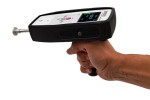Authors
KW Chiu, J Hash, R Meyers, BDX Lascelles
Lab
Comparative Pain Research and Education Centre, North Carolina State University College of Veterinary Medicine, Raleigh, NC, United States
Journal
Scientific Reports
Abstract
Endogenous Pain Modulation (EPM) impairment is a significant contributor to chronic pain. Conditioned pain modulation (CPM) testing assesses EPM function. Osteoarthritic (OA) dogs are good translational models, but CPM has not been explored. Our aim was to assess EPM impairment in OA dogs compared to controls using CPM. We hypothesized that CPM testing would demonstrate EPM impairment in OA dogs compared to controls. Dogs with stifle/hip OA and demographically-matched controls were recruited. The pre-conditioning test stimulus, using mechanical/thermal quantitative sensory testing (MQST or TQST), were performed at the metatarsus. A 22N blunt probe (conditioning stimulus) was applied to the contralateral antebrachium for 2_minutes, followed by MQST or TQST (post-conditioning test stimulus). The threshold changes from pre to post-conditioning (deltaMQST and deltaTQST) were compared between OA and control dogs. Twenty-four client-owned dogs (OA, n_=_11; controls, n_=_13) were recruited. The deltaMQST(p_<_0.001) and deltaTQST(p_<_0.001) increased in control dogs but not OA dogs (deltaMQST p_=_0.65; deltaTQST p_=_0.76). Both deltaMQST(p_<_0.001) and deltaTQST(p_<_0.001) were different between the OA and control groups. These are the first data showing that EPM impairment is associated with canine OA pain. The spontaneous OA dog model may be used to test drugs that normalize EPM function.
BIOSEB Instruments Used:
Vetalgo: Algometer for Big Mammals (BIO-VETALGO)

 Pain - Thermal Allodynia / Hyperalgesia
Pain - Thermal Allodynia / Hyperalgesia Pain - Spontaneous Pain - Postural Deficit
Pain - Spontaneous Pain - Postural Deficit Pain - Mechanical Allodynia / Hyperalgesia
Pain - Mechanical Allodynia / Hyperalgesia Learning/Memory - Attention - Addiction
Learning/Memory - Attention - Addiction Physiology & Respiratory Research
Physiology & Respiratory Research
 Pain
Pain Central Nervous System (CNS)
Central Nervous System (CNS) Neurodegeneration
Neurodegeneration Sensory system
Sensory system Motor control
Motor control Mood Disorders
Mood Disorders Other disorders
Other disorders Muscular system
Muscular system Joints
Joints Metabolism
Metabolism Cross-disciplinary subjects
Cross-disciplinary subjects SFN2024: Meet our team in Chicago on booth #876
SFN2024: Meet our team in Chicago on booth #876 